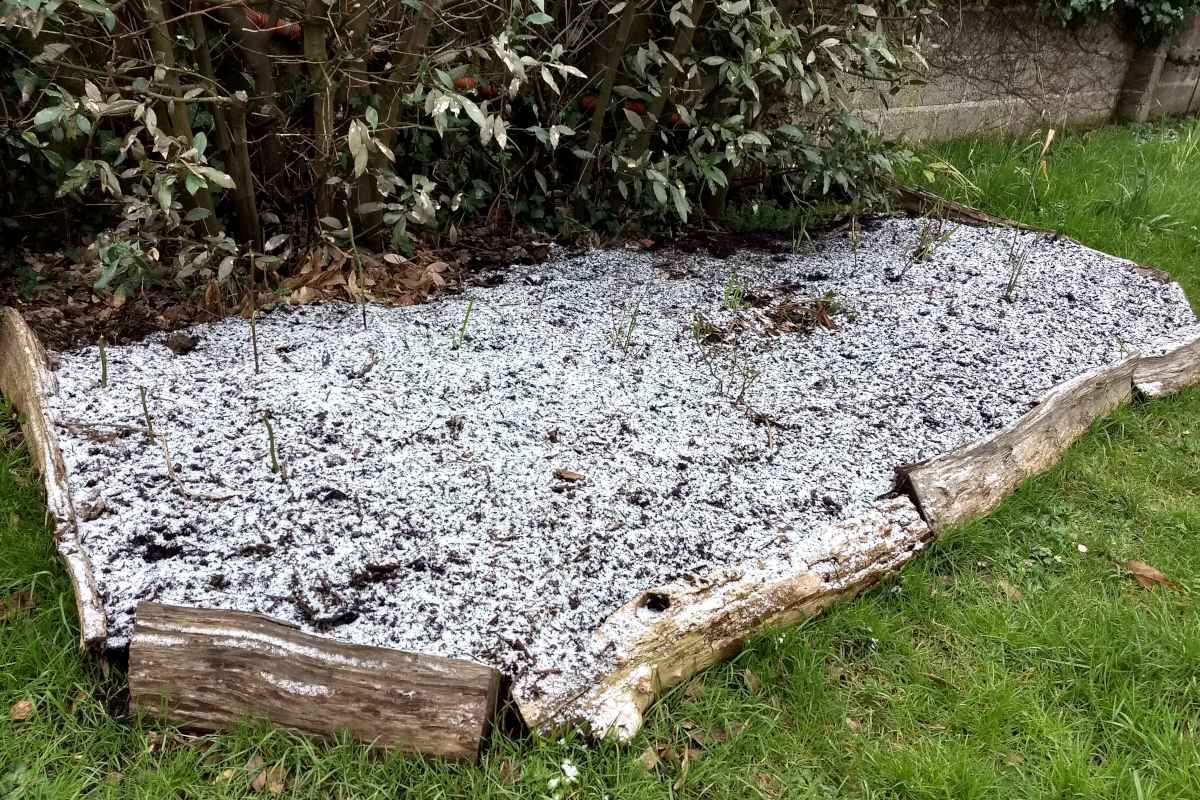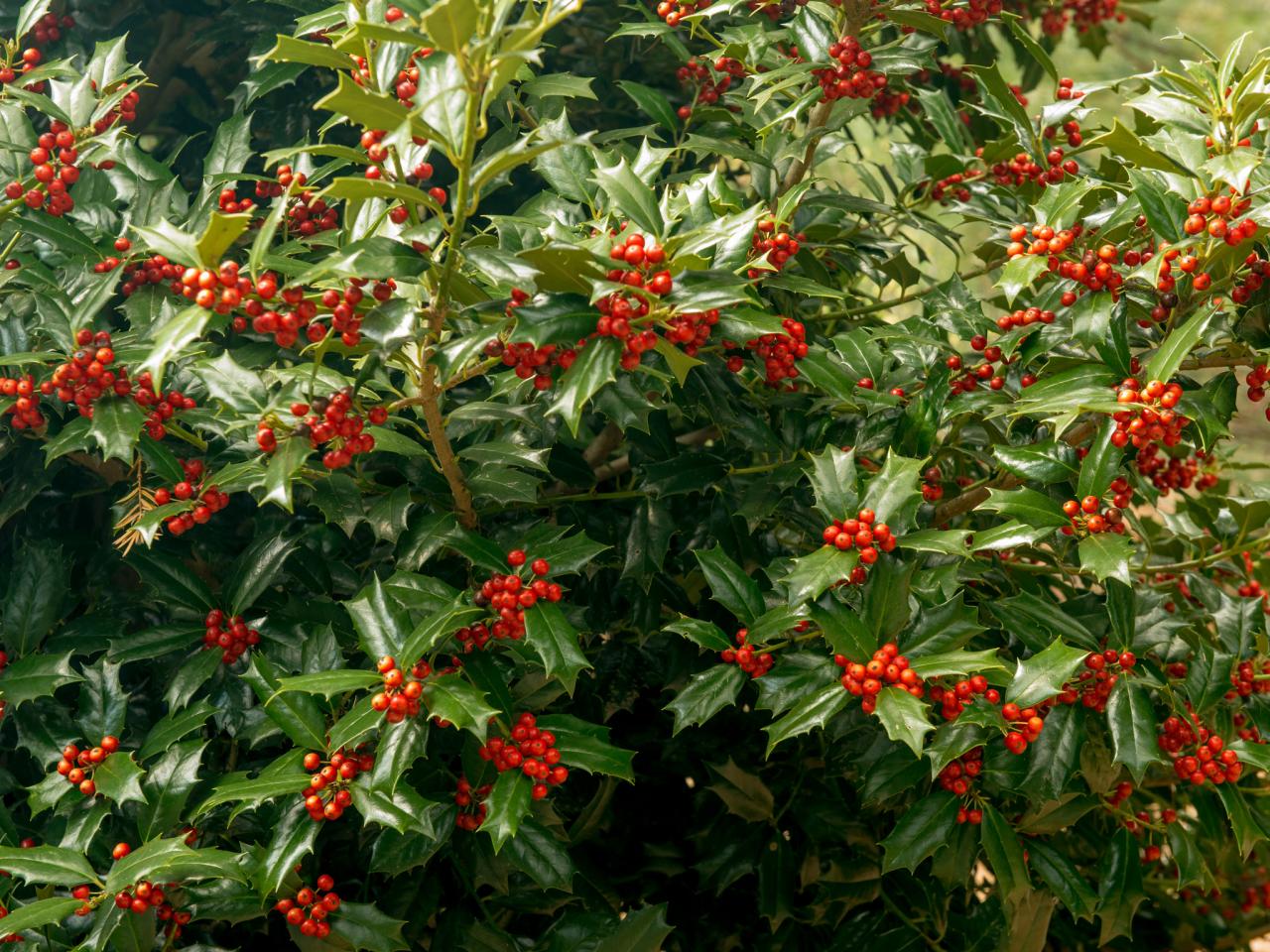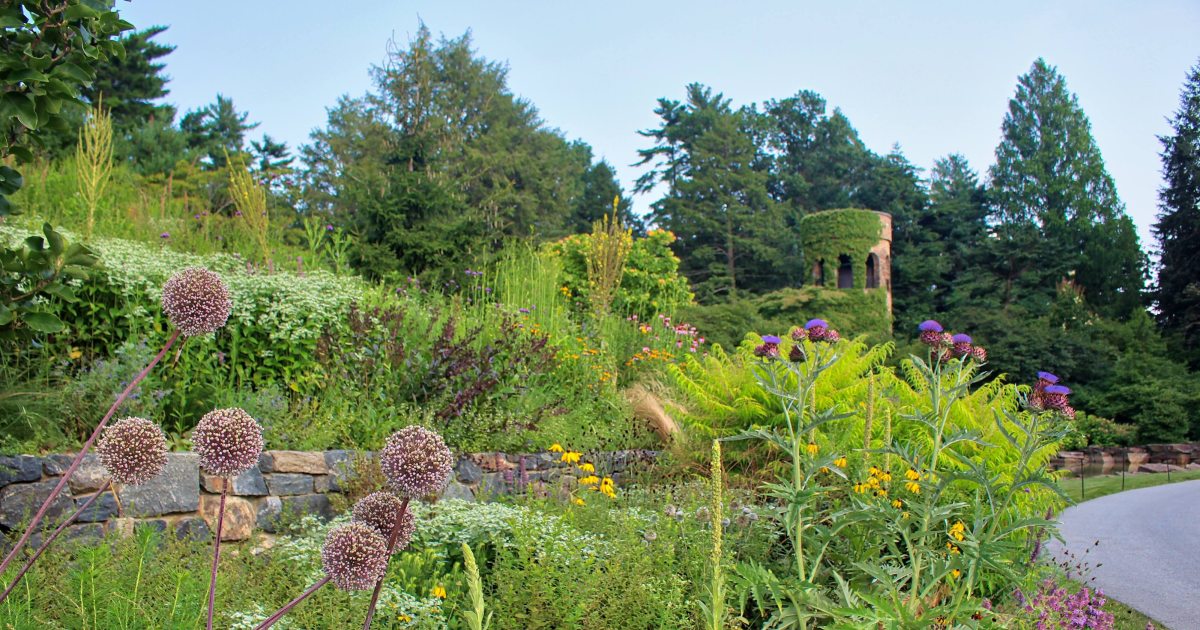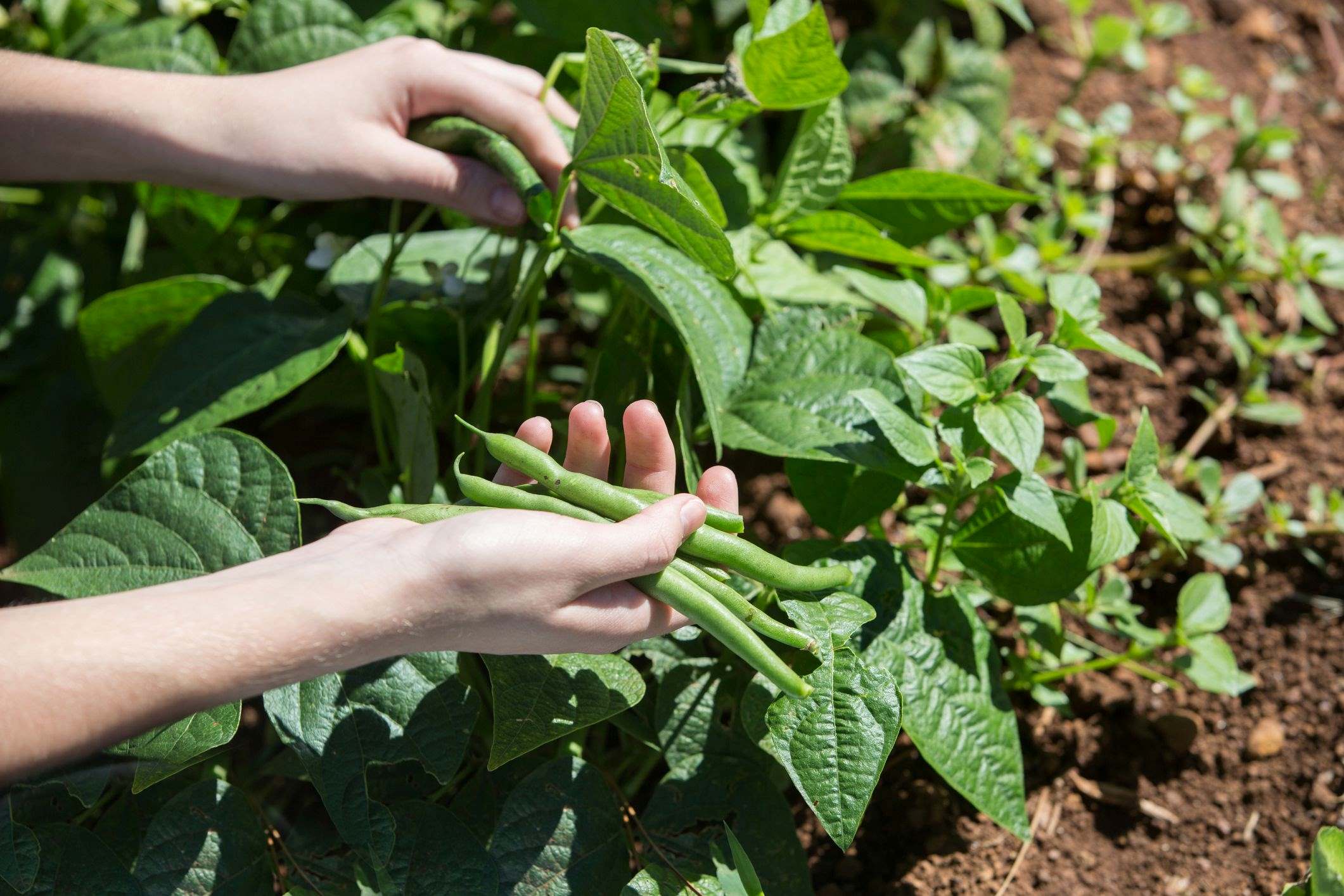Home>Garden Design>Planning Your Garden>How To Plant Green Velvet Boxwood Shrubs
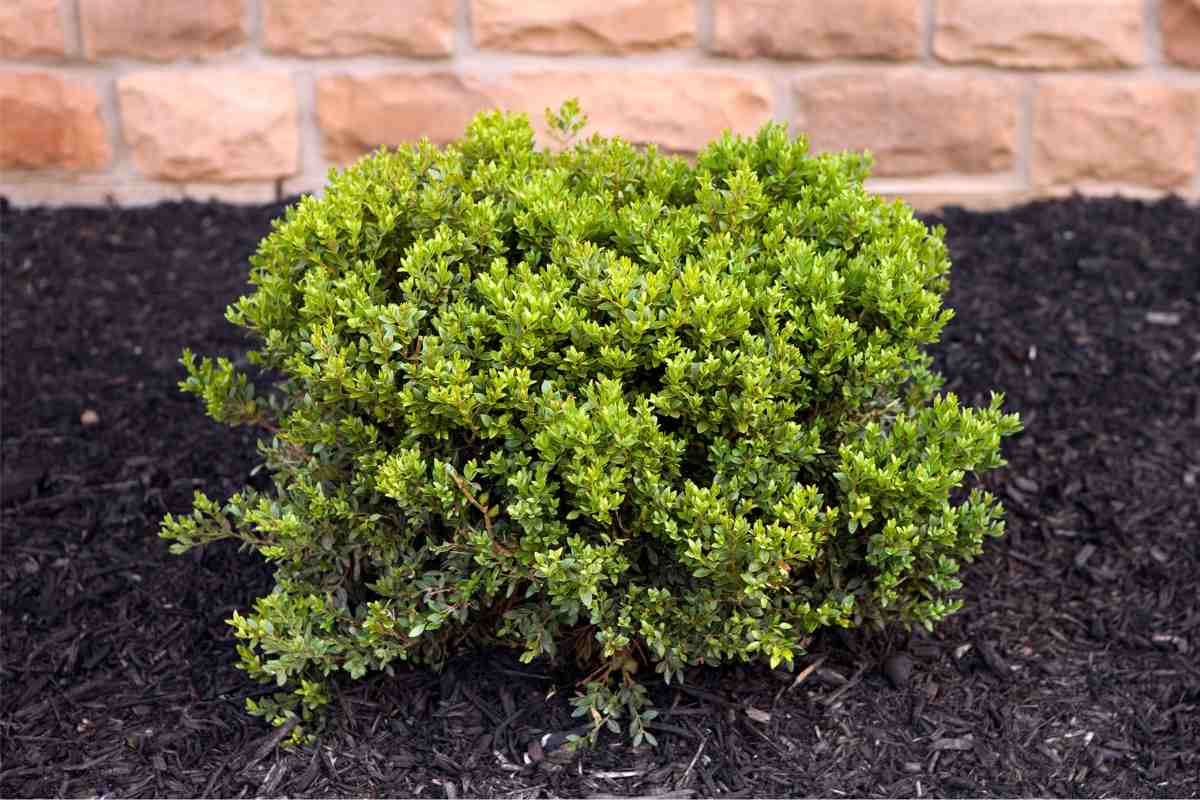

Planning Your Garden
How To Plant Green Velvet Boxwood Shrubs
Modified: January 22, 2024
Learn how to plant Green Velvet Boxwood shrubs and get started on planning your garden. Find step-by-step instructions and expert tips for a successful garden project.
(Many of the links in this article redirect to a specific reviewed product. Your purchase of these products through affiliate links helps to generate commission for Chicagolandgardening.com, at no extra cost. Learn more)
Table of Contents
Introduction
Welcome to the world of gardening! Planning and planting your own garden can be both rewarding and therapeutic. Whether you have a large backyard or a small balcony, creating a beautiful and inviting space is within your grasp.
One of the key elements of a well-designed garden is the selection of plants. And if you’re looking for a versatile and elegant shrub to add some structure and greenery to your garden, look no further than the Green Velvet Boxwood.
Green Velvet Boxwood (Buxus sempervirens ‘Green Velvet’) is a popular choice for homeowners and landscape professionals alike. This evergreen shrub is known for its dense, compact growth habit and vibrant green foliage. Its versatility makes it suitable for hedges, borders, foundation plantings, and even container gardening.
In this article, we will guide you through the process of planting and caring for Green Velvet Boxwood shrubs. From choosing the right location to proper pruning techniques, we’ll cover everything you need to know to ensure the success of your garden.
So, grab your gardening gloves and let’s get started on creating a beautiful and thriving garden with Green Velvet Boxwood!
Choosing the Right Location
When it comes to planting Green Velvet Boxwood shrubs, choosing the right location is crucial for their health and growth. Here are some important factors to consider:
- Sunlight: Green Velvet Boxwood shrubs thrive in partial to full sunlight. Find a location in your garden that receives at least 4-6 hours of direct sunlight a day. Avoid areas that are constantly shaded, as it can lead to leggy growth and poor foliage color.
- Soil Drainage: These shrubs prefer well-drained soil to prevent waterlogging, which can lead to root rot. Test the soil’s drainage by digging a hole and filling it with water. If the water drains within an hour, the soil is well-drained. If it takes longer, consider amending the soil with organic matter or choose a raised bed for planting.
- Soil pH: Green Velvet Boxwood shrubs prefer slightly acidic to neutral soil with a pH range of 6.0 to 7.0. Test the soil pH using a soil testing kit and make necessary adjustments by adding amendments like lime or sulfur to achieve the desired pH level.
- Protection from Elements: While Green Velvet Boxwood shrubs are hardy, they can benefit from some protection against strong winds. Choose a location that provides some natural barriers, such as fences or other shrubs, to shield them from heavy gusts.
- Space: Consider the mature size of the shrubs when selecting the location. Green Velvet Boxwoods can reach a height and width of 3-4 feet. Ensure there is enough space for them to grow without overcrowding other plants or structures in your garden.
By taking these factors into consideration, you can provide an ideal growing environment for your Green Velvet Boxwood shrubs. This will contribute to their overall health and appearance, allowing them to thrive in your garden.
Preparing the Soil
Before planting Green Velvet Boxwood shrubs, it is essential to prepare the soil to create optimal conditions for their growth. Here are the steps to prepare the soil:
1. Clear the area: Start by removing any existing grass, weeds, or debris from the planting site. This will prevent competition for nutrients and ensure proper establishment of the shrubs.
2. Break up the soil: Use a garden fork or a tiller to loosen the soil to a depth of at least 12 inches. This will improve drainage and allow the roots to penetrate easily into the soil.
3. Amend the soil: Add organic matter such as compost, well-rotted manure, or peat moss to the soil. This will improve the soil structure, fertility, and moisture-retaining capacity.
4. Mix the amendments: Use a garden fork or a tiller to mix the amendments thoroughly into the soil. Ensure that the amendments are evenly distributed to provide a balanced growing medium for the shrubs.
5. Test the soil: Consider conducting a soil test to determine the soil’s nutrient levels. This will help you identify any deficiencies and allow you to make targeted amendments to meet the shrubs’ nutritional requirements.
6. Adjust soil pH: Green Velvet Boxwood shrubs prefer slightly acidic to neutral soil with a pH range of 6.0 to 7.0. If the soil test reveals a pH imbalance, you can adjust it by adding lime to increase alkalinity or sulfur to increase acidity.
By following these steps to prepare the soil, you will create a favorable environment for the Green Velvet Boxwood shrubs, promoting healthy root development and overall growth.
Selecting and Purchasing Green Velvet Boxwood Shrubs
Choosing the right Green Velvet Boxwood shrubs is crucial to ensure a successful planting and thriving garden. Here are some factors to consider when selecting and purchasing Green Velvet Boxwood shrubs:
1. Size and Shape: Determine the desired size and shape of the shrubs for your garden. Green Velvet Boxwood shrubs typically reach a height and width of 3-4 feet, but you can find smaller or larger varieties. Consider the available space and the intended use of the shrubs, whether it’s for hedges, borders, or containers.
2. Health and Vigor: Inspect the plants for signs of good health and vigor. Look for uniformly green and vibrant foliage, without any yellowing, discoloration, or signs of pests or diseases. Avoid purchasing shrubs with damaged stems or roots, as this can negatively impact their growth and survival.
3. Root Ball: Examine the root ball of the shrubs. The roots should be well-developed and not excessively circling the pot. Avoid plants with tightly bound or pot-bound roots, as this can hinder their ability to establish in the ground after planting.
4. Source: Purchase Green Velvet Boxwood shrubs from reputable nurseries, garden centers, or online suppliers. Ensure that they specialize in providing healthy and high-quality plants.
5. Timing: Consider the best time to purchase the shrubs. Green Velvet Boxwoods can be planted in spring or fall when the weather is mild and there is sufficient time for the roots to establish before extreme temperatures. Avoid purchasing in summer or winter, as these seasons can be stressful for newly planted shrubs.
6. Quantity: Determine the number of shrubs needed for your garden based on the desired layout and spacing. Consider purchasing a few extras as backups in case of any losses or to fill in any gaps during planting.
By carefully selecting and purchasing healthy and well-suited Green Velvet Boxwood shrubs, you will set a solid foundation for their growth and ensure the success of your garden’s design and overall aesthetic.
Digging the Planting Hole
Properly digging the planting hole for your Green Velvet Boxwood shrubs is essential to provide them with a strong and stable foundation for growth. Here are the steps to follow:
1. Measure and plan: Determine the spacing between each shrub based on their mature size and the desired layout of your garden. Measure and mark the locations of the planting holes accordingly.
2. Size of the hole: Dig a hole that is wider and slightly shallower than the root ball of the shrub. The width of the hole should be 2-3 times the width of the root ball. The depth of the hole should allow the top of the root ball to be level with or slightly above the surrounding soil surface.
3. Loosen the soil: Use a shovel or garden fork to loosen the soil at the bottom of the hole. This will ensure that the roots can easily penetrate into the surrounding soil and establish quickly.
4. Remove any obstacles: Clear the hole from any rocks, roots, or other debris that may impede the proper growth of the plant. These obstacles can restrict the root development and affect the overall health of the shrub.
5. Backfill: Prepare a mix of the excavated soil and organic matter, such as compost or peat moss. Backfill the hole with this mixture, gently firming it around the root ball. Ensure that the shrub is centered in the hole and is at the right level, neither too deep nor too shallow.
6. Watering: Water the newly planted shrub immediately after planting. This will help settle the soil and remove any air pockets around the roots. Keep the soil moist, but not waterlogged, in the following weeks to promote root establishment.
By following these steps and taking care to dig the planting hole properly, you will provide the Green Velvet Boxwood shrubs with an optimal environment for healthy development and ensure their long-term success in your garden.
Planting the Green Velvet Boxwood Shrubs
Now that you have prepared the soil and dug the planting holes, it’s time to plant the Green Velvet Boxwood shrubs. Follow these steps to ensure proper planting:
1. Remove the shrub from the container: Gently tap the sides of the container to loosen the root ball. Carefully slide the shrub out of the container, taking care not to damage the roots.
2. Inspect the roots: Examine the roots of the shrub. If you notice any circling or tightly bound roots, gently tease them apart or make a few vertical cuts along the sides of the root ball to encourage outward growth.
3. Place the shrub in the hole: Position the shrub in the center of the planting hole, ensuring that the top of the root ball is level with or slightly above the surrounding soil level.
4. Backfill the hole: Backfill the hole with the soil mixture, gently firming it around the root ball. Avoid compacting the soil too tightly, as it can restrict air and water movement to the roots. Leave a small watering well around the base of the shrub to help retain moisture.
5. Watering: Immediately after planting, thoroughly water the shrub to settle the soil and eliminate any air pockets around the roots. Continue to water regularly for the first few weeks to promote root establishment. Maintain moist but not waterlogged soil.
6. Mulching: Apply a layer of organic mulch around the base of the shrub, extending a few inches beyond the root zone. This will help conserve moisture, suppress weed growth, and regulate soil temperature.
7. Staking: In most cases, Green Velvet Boxwood shrubs do not require staking. However, if you live in a windy area or have unstable soil, it may be necessary to provide support with stakes until the shrub establishes.
8. Pruning: While not necessary at the time of planting, you may gently trim any damaged or overly long branches to encourage growth and shape the shrub.
By following these steps, you will ensure a successful and proper planting of your Green Velvet Boxwood shrubs, setting them up for healthy growth and enhancing the beauty of your garden.
Mulching the Plants
Mulching is an important step in caring for your Green Velvet Boxwood shrubs. Applying a layer of mulch around the base of the plants offers numerous benefits to their health and overall performance. Here’s what you need to know about mulching:
1. Benefits of mulching: Mulch acts as a protective barrier, providing several advantages to your plants. It helps retain moisture in the soil, reducing the need for frequent watering. Mulch also helps regulate soil temperature, keeping it cooler in hot weather and warmer during colder months. Additionally, mulch suppresses weed growth, preventing competition for nutrients, and acts as an insulation layer, protecting the roots from extreme temperature fluctuations.
2. Choosing the right mulch: Natural organic mulches, such as shredded bark, wood chips, or compost, are ideal for Green Velvet Boxwood shrubs. These materials break down slowly, enriching the soil over time and providing a nutrient-rich environment for the plants. Avoid using materials like rubber mulch or rocks, as they do not provide the same benefits and may hinder water and air circulation around the roots.
3. Applying mulch: Begin by clearing any weeds or grass around the base of the shrubs. Ensure that the area is moist before spreading the mulch. Apply a layer of mulch around 2-4 inches thick, making sure to leave space around the base of the plants to prevent moisture accumulation near the stems. Extend the mulch layer at least a few inches beyond the root zone of the shrubs.
4. Mulch maintenance: Regularly inspect the mulch layer and replenish it as needed. Over time, the mulch may break down or get displaced due to weather conditions or decomposition. Maintain the desired thickness of the mulch to ensure its effectiveness in retaining moisture and suppressing weeds. Avoid piling mulch against the stems of the shrubs, as this can create a home for pests and promote disease.
5. Watering: While mulch helps retain moisture, it’s important to water the shrubs properly. Monitor the moisture levels in the soil and water when necessary. Mulch can reduce water evaporation, so be mindful not to overwater the plants, as excessive moisture can lead to root rot or other fungal diseases.
By mulching your Green Velvet Boxwood shrubs, you provide them with a favorable growing environment, promoting healthy growth, conserving moisture, and minimizing weed competition. Take the time to mulch your plants properly, and you’ll enjoy the benefits of a healthier and more beautiful garden.
Watering and Fertilizing
Proper watering and fertilizing are essential for maintaining the health and vigor of your Green Velvet Boxwood shrubs. Here are some tips to ensure your plants receive the right amount of water and nutrients:
Watering:
1. Consistent moisture: Green Velvet Boxwood shrubs prefer moist, but not waterlogged, soil. Water the shrubs deeply and thoroughly, ensuring that the water reaches the root zone. Avoid shallow, frequent waterings, as they promote shallow root growth.
2. Watering frequency: The watering frequency depends on factors such as the climate, soil conditions, and the age of the shrubs. As a general guideline, water the shrubs deeply once or twice a week, ensuring that the soil remains evenly moist. Adjust the frequency during periods of drought or heavy rainfall.
3. Mulch advantage: The layer of mulch applied around the shrubs helps retain moisture in the soil and reduce water evaporation. Regularly check the moisture levels in the soil and adjust your watering accordingly. Avoid overwatering, as it can lead to root rot or other fungal diseases.
Fertilizing:
1. Soil test: Conduct a soil test to determine the nutrient levels in the soil. This will help you understand if any specific nutrients are deficient or excessive. Based on the results, you can choose the appropriate fertilizer and application rate.
2. Slow-release fertilizer: Green Velvet Boxwood shrubs generally benefit from a balanced, slow-release fertilizer formulated for woody plants. Apply the fertilizer following the instructions on the package and avoid over-fertilizing, as it can burn the roots.
3. Application timing: Fertilize the shrubs in early spring before the new growth starts. This will provide them with the necessary nutrients for the upcoming growing season. Avoid fertilizing in late summer or fall, as it can stimulate new growth that may not have time to harden off before winter.
4. Organic alternatives: If you prefer to use organic fertilizers, options like compost, well-rotted manure, or organic slow-release fertilizers can be beneficial. These organic amendments improve soil fertility and provide a slow and steady release of nutrients to the shrubs.
By maintaining consistent moisture levels through proper watering and providing adequate, balanced fertilization, you will ensure the health and vitality of your Green Velvet Boxwood shrubs, enhancing their overall growth and beauty in your garden.
Proper Pruning Techniques
Pruning plays a vital role in maintaining the shape, health, and overall appearance of your Green Velvet Boxwood shrubs. By following proper pruning techniques, you can promote dense growth, remove any diseased or damaged branches, and enhance the aesthetic appeal of your shrubs. Here are some guidelines for pruning Green Velvet Boxwood shrubs:
1. Timing: The best time to prune Green Velvet Boxwood shrubs is in late winter or early spring, before new growth begins. This period allows you to shape the shrubs and remove any winter damage or dead branches.
2. Tool selection: Use sharp, clean pruning shears or hand pruners to make precise cuts. Disinfect your tools with rubbing alcohol or a diluted bleach solution before and after each use. Dull or dirty tools can damage the shrub and increase the risk of disease transmission.
3. Pruning goals: Determine your pruning goals before you start. Common pruning goals for Green Velvet Boxwood shrubs include maintaining a specific shape, reducing size, improving airflow and light penetration, and removing dead or damaged branches.
4. Shaping and size control: To shape the shrubs, selectively remove branches to maintain a rounded or formal appearance. Start by removing any crossed, rubbing, or inward-facing branches. Cut back long or overgrown branches to a healthy bud or lateral branch. Maintain a balanced shape by stepping back and assessing the shrub’s overall form as you prune.
5. Disease and damage removal: Check for any signs of disease or damage while pruning. Remove any branches that show symptoms of pests, diseases, or winter injury. Make clean cuts close to the collar of the branch, where it meets the trunk or parent branch.
6. Light pruning throughout the year: Light pruning can be done during the growing season to maintain the desired shape and remove any stray or unruly branches. Avoid drastic pruning during this time, as it can disrupt the shrub’s energy production and growth.
7. Regular maintenance: Regularly inspect your shrubs for any pruning needs throughout the year. Promptly remove any dead or diseased branches as you notice them. Light and regular maintenance pruning can help keep the shrubs healthy and reduce the need for more drastic pruning later on.
By following these proper pruning techniques, you can ensure the health, vigor, and attractiveness of your Green Velvet Boxwood shrubs. Remember to prune with care and moderation, respecting the natural growth habit of the shrubs for optimal results.
Protecting the Shrubs from Pests and Diseases
Green Velvet Boxwood shrubs can be susceptible to various pests and diseases, which can impact their health and aesthetic appeal. To protect your shrubs, it’s important to be vigilant and take preventive measures. Here’s what you can do to safeguard your Green Velvet Boxwood shrubs:
1. Regular inspection: Frequently inspect your shrubs for any signs of pests or diseases. Look for discoloration, spots, holes in leaves, unusual growth, or presence of insects. Early detection allows for prompt treatment and helps prevent the spread of infestations.
2. Proper sanitation: Keep the area around the shrubs clean and free from fallen leaves, debris, or dead plant material. This reduces the chances of pests and diseases overwintering or finding a suitable environment to thrive.
3. Water management: Avoid overwatering the shrubs, as excessive moisture can lead to root rot and create favorable conditions for disease development. Water at the base of the plant using a soaker hose or drip irrigation, rather than sprinkling the foliage.
4. Mulching: Maintain a layer of organic mulch around the base of the shrubs. This acts as a barrier, preventing weed growth and minimizing the risk of certain pests. However, ensure that the mulch is not in direct contact with the stems, as it can create a moist environment that attracts pests and promotes disease.
5. Pruning and air circulation: Proper pruning not only enhances the shape and appearance of the shrubs but also promotes good air circulation. Thin out dense growth and remove any crossed or rubbing branches to increase airflow, which can help prevent conditions favorable for fungal diseases.
6. Pest control: Monitor for common pests such as boxwood leafminer, boxwood mites, and boxwood psyllids. If an infestation is detected, consider using environmentally friendly insecticides specifically labeled for boxwood shrubs. Follow the instructions carefully and apply the treatment during the recommended stage of the pest’s lifecycle.
7. Disease management: Common diseases affecting Green Velvet Boxwood shrubs include boxwood blight, root rot, and leaf spot. To manage these diseases, ensure proper watering practices, avoid overhead watering, and promptly remove and destroy any infected plant material. Use fungicides labeled for boxwood diseases if necessary, following the instructions provided.
By implementing these preventive measures and staying vigilant, you can protect your Green Velvet Boxwood shrubs from pests and diseases, ensuring they remain healthy and vibrant in your garden.
Conclusion
Congratulations on learning the ins and outs of planting and caring for Green Velvet Boxwood shrubs! By following the steps outlined in this guide, you are well-equipped to create a beautiful and thriving garden with these versatile and elegant shrubs.
Remember, choosing the right location is key to the success of your shrubs. Ensure they receive proper sunlight, have well-drained soil, and are protected from harsh elements. Preparing the soil by clearing the area, adding organic matter, and testing its pH will create an ideal growing environment.
When selecting and purchasing Green Velvet Boxwood shrubs, look for healthy specimens with robust roots. Dig the planting holes carefully, considering the space required for the shrubs to grow. After planting, be sure to mulch around the shrubs to conserve moisture and suppress weed growth.
Watering and fertilizing your shrubs appropriately will support their growth and vitality. Maintain consistent moisture levels, avoiding overwatering, and apply a slow-release fertilizer in the appropriate season. Additionally, implementing proper pruning techniques will shape the shrubs, remove dead or damaged branches, and enhance their overall appearance.
Lastly, take precautions to protect your shrubs from pests and diseases. Regularly inspect your plants, practice good sanitation, and manage moisture levels to prevent issues. If infestations or diseases occur, treat them promptly using appropriate methods and products.
With dedication and ongoing care, your Green Velvet Boxwood shrubs will thrive and add beauty to your garden for years to come. Enjoy the process of planning, planting, and nurturing your own garden oasis, and relish in the rewards of a flourishing landscape.


